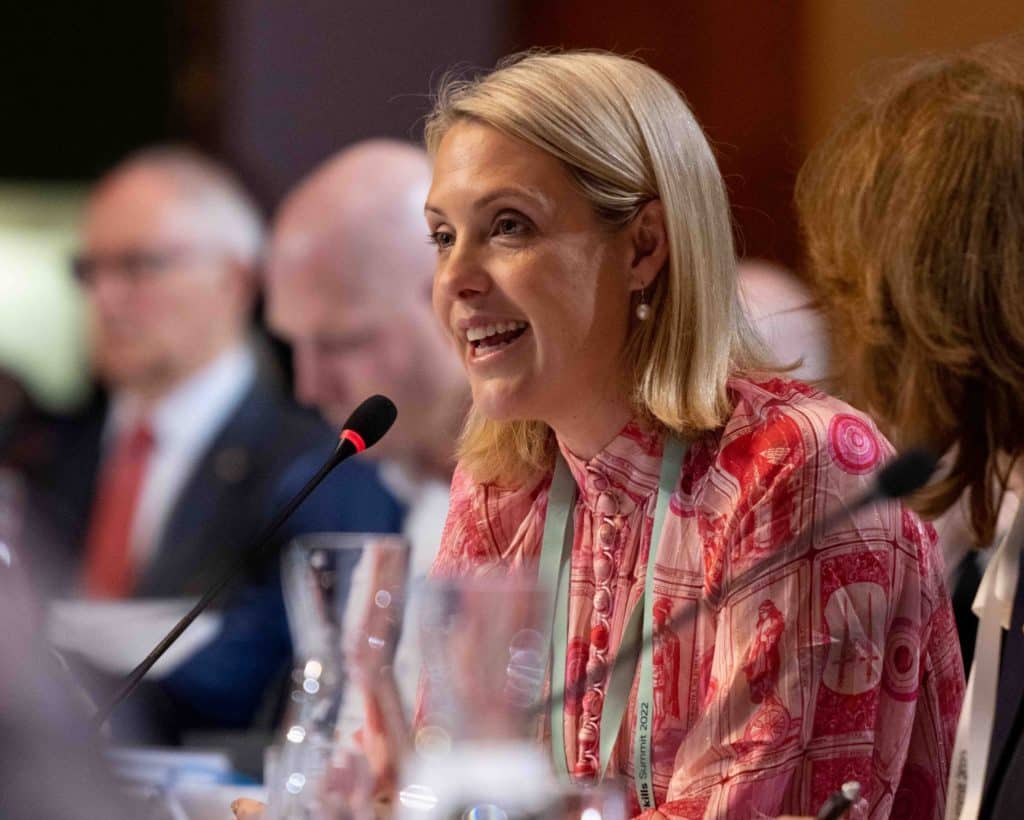Not being able to access or afford quality early childhood education and care remains the single biggest impediment to women’s workforce participation in Australia. For many of the 78,000 parents and carers in The Parenthood community this is not just an abstract, hypothetical. It’s their reality. Inaccessible or unaffordable early learning is a barrier that impacts families day to day.
That women in Australia are the best educated in the world but rank #38th in the world for workforce participation illustrates the extent to which this barrier influences women. No credible conversation about growing the strength or sustainability of our economy can overlook access and affordability of quality early childhood education and care.
It is key to unlocking the full potential of the female workforce, growing productivity, improving human capital and to help reverse the educational decline that Danielle Wood, CEO of the Grattan Institute, referred to in her opening keynote address.
One in five children in Australia arrive at school developmentally vulnerable. In rural areas it’s two in five. Among Aboriginal and Torres Strait Islander children half arrive at school developmentally vulnerable. The evidence is clear that children who arrive at school behind rarely, if ever, catch up to their peers. Children who attend quality early learning in the early years are half as likely to arrive at school behind. They enjoy lifelong advantages – in their health, education and wellbeing – as a result.
Right now investing early childhood education and care also presents a compelling and immediate solution to workforce shortages. The government’s Cheaper Childcare package that is due to take effect on the 1st of July next year will result in 8 percent more hours being worked by secondary earners with young children – mostly mums.
By lowering the cost of care for these families we can free up the equivalent of 44,000 additional full-time workers. Immediately. This potential workforce is right here. They’re experienced, skilled and want to work more. Many of these cohort are already currently employed.
Of women in Australia aged between 25-40 with young children just 56% participate in paid work. Of these 61% work part time, one of the highest rates of part time work of any industrialised country.
High rates of part time work and lagging participation rates among women reflect that for too many families the cost of care is so high – or is so inaccessible – that two parents simply cannot afford to work. It is, almost invariably, mums who reduce or stop work as a result.
The Prime Minister Anthony Albanese recognised this “economic insanity” and has tabled a solution. That it’s a centrepiece of his government’s economic reform is profoundly significant.
But, and this is a big but, to realise the increased productivity and myriad benefits for children we need an Early Childhood Education and Care sector that can accommodate the extra days that families will need in order to work additional days and hours.
The estimated increase in demand for early learning as a result of the ‘Cheaper Childcare’ changes will require the equivalent of 9,650 additional full time educators by next year. But right now rather than expanding this critical workforce, like many other female dominated workforces, is contracting. At an alarming rate.
Turnover in early learning has always been high sitting around 20%, which is considerably higher than the 12% rate in education generally. In the past year turnover has accelerated sharply and some services have reported turnovers rates between 30-40%.
Last month there were at least 6600 staff vacancies in early learning services right around the country. This workforce contracting is a problem for every employer and organisation in the country. Because if a parent cannot access suitable, quality care, they cannot access work.
Without early educators there is no early education. Without accessible, affordable, suitable early childhood education there can be no increased productivity, no tapping into the great unrealised ‘iron ore’ deposit that is female workforce participation, no systemic erosion of inequity and no chance to give every child in Australia access to the life-changing educational benefits of quality early learning.
The most significant obstacle that stands between where Australia is on all of these measures, and where we could stand on all these measures, is a strong and sustainable early childhood education and care workforce.
This is the moment we need to confront the reasons that early educators are leaving. We cannot ignore that in this sector, as with so many female-dominated workforces, skilled, valuable and demanding work is paid considerably less than less skilled, less valuable and less demanding work.
Women in female-dominated workforces earn between a quarter and one-third less than men with an equivalent qualification in male-dominated workforces. Consider this gap in earnings revealed on the Labour Market Insights compiled by the National Skills Commission. The average take home pay for an early educator in Australia is $1,059 per week. This compares with an entry level Building Labourer who, on average, takes home $1,550 per week.
A survey of 4000 early educators less than a year ago showed that 73% of the workforce plan on leaving within three years. Pay is, undoubtedly, a big factor but so too are rising stress levels, not feeling valued or respected, and not enjoying secure employment. Feeling like they have to perpetually be doing more with less and burnout are real too.
That’s why this week, on Wednesday the 7th of September, early childhood educators and teachers around the country are going to shut down and take to the streets. They’ve had enough.
Early educators are leaving because they feel like they cannot afford – financially or mentally – to stay. None of us can afford that. Not children. Not parents. Not employers. Not the government.
It is time to make the necessary investment in this critical piece of educational and economic infrastructure. Not just in making early education more affordable and more accessible for all children, but in ensuring we have a strong, sustainable and growing workforce. If there is concern about the cost attached to this investment, let’s remind ourselves that the cost of inaction is higher. We are already paying for a system that doesn’t work well enough.
The average Australian woman misses out on $693K in income & $180K in super over the course of her life due to inadequate parenting policies. That is the motherhood penalty in Australia and it’s individual mums who are footing that bill.
We spend at least $15billion every year on late intervention for children and young people. That is money that can be avoided by investing in the early years.
We know that for every dollar invested in early education programs we get at least $2 in return. That is an investment – not a cost. And there is not a person or organisation in Australia that won’t benefit from us making this investment now in an early education and care system that works. Let’s not let another Summit or discussion in 10 or 20 years from now, once again, reflect on what could have been achieved if Australia followed the evidence and pursued this investment now.
The evidence is incontrovertible. The moment is upon us. It will pay for itself time and time again. It will help solve, at once, a number of significant economic and social challenges we’re facing. The question is no longer if we should implement this bold reform but when. The most credible answer, is now.
*This is the full speech I wanted to give at the Job Summit at Parliament House on Thursday 1st of September. But with just two minutes I had to deliver an abridged version.


